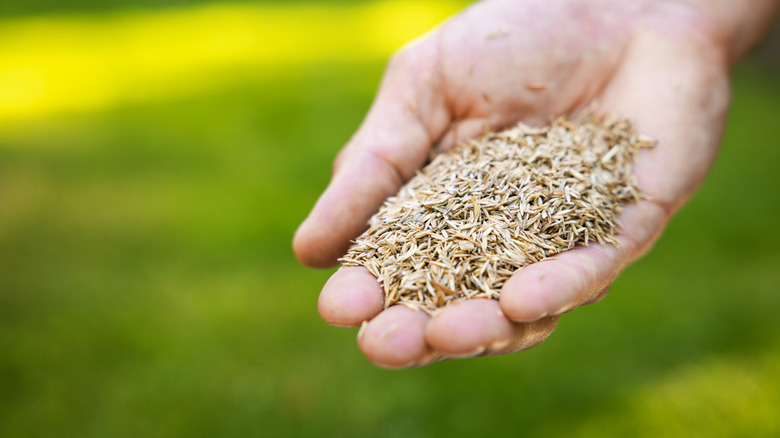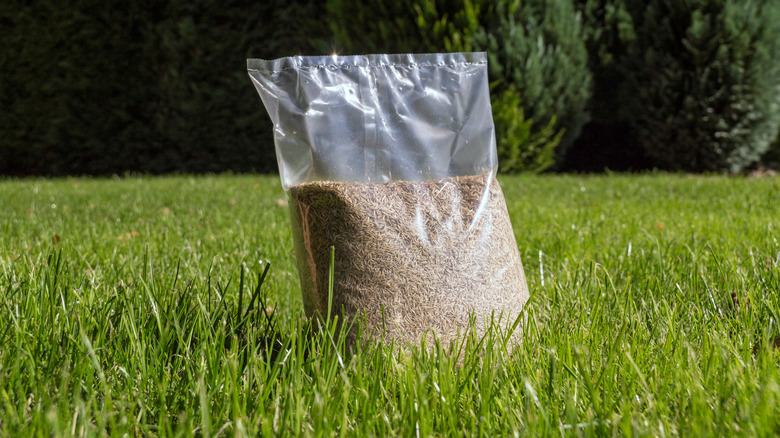How Long Grass Seed Really Lasts (And When To Toss It)
One of the benefits of growing grass from seed is that it's by far the least expensive way to install or refresh a lawn. Even so, if you find yourself with some seed left over, it's only logical to save it for next time. Grass seed doesn't last indefinitely, but the good news is with proper storing methods, you won't need to throw it away for years.
Grass seeds don't have expiration dates like food does, but different seeds remain viable for different lengths of time — some can last for years and years in storage and still sprout once planted, while others have a much shorter shelf life. If it's still in a sealed package, it can last for up to three years, while seed that has already been opened can last for a year to 18 months in proper storage conditions.
After that, the seed's germination rate starts to significantly decrease, meaning you won't get as many successful seedlings if you sow it in your yard. However, grass seed doesn't lose viability all at once. How quickly the germination rate decreases depends on the type of grass, the quality of the seed, and how it's stored, but expect roughly a 10% to 20% decrease per year. While old grass seed won't be as reliable or productive, you can likely still find a use for it in your yard.
When to toss your grass seed
You can determine how viable your seed is by doing a germination test. Place 10 grass seeds on a damp paper towel, and place the towel in a plastic bag in a warm area away from direct light. Keep the towel moist. At around seven to 10 days, some seeds should have sprouted. The number of seeds that sprout gives you a rough germination rate — for example, if seven seeds out of 10 sprout, your germination rate is around 70%.
Even if the germination rate is quite low (below 50%), you can use the grass seed to overseed your lawn. However, you should toss the seeds if they're moldy or infested by bugs. If it has been 10 years or more, the germination rate is likely so low that it's not worth planting that seed anymore, even if it's still sealed.
To make grass seed last for as long as possible, the key is to prevent moisture and air from reaching it. Keep the bag sealed unless you're using it right away. If you've opened it already, transfer the seed to an airtight container. Store the seed in a cool, dry place away from direct sunlight — a garage can work well. The humidity level should be below 60%. Temperatures around 40 to 50 degrees Fahrenheit are ideal, but dryness is more important than temperature. Label the container with the date you bought or opened the seed. High-quality grass seed lasts longer; certain species also have longer shelf lives, like creeping bentgrass, which has a 50% germination rate even after five years.

